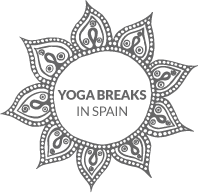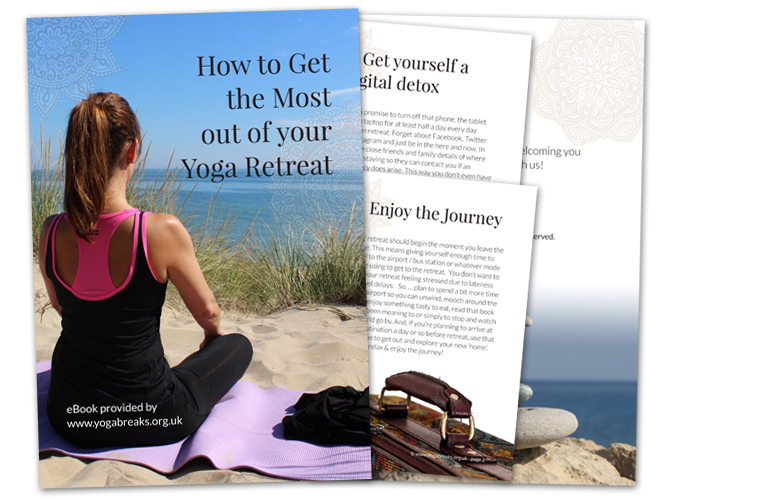If you’re reading thiS I’m guessing you’re keen to improve your yoga practice?
When I first started yoga, I just wanted to improve my flexibility & mobility. And, as I became more familiar with the postures, I would often drift into ‘auto-pilot’ and just place the posture shape on my body when I heard the teacher cue the pose.
Then, over time, as I learnt more about yoga by practicing with different teachers, reading an enormous amount of yoga books and trying different styles of yoga, I started to realise that …
yoga is what you feel .. not what you do.
And so in this blog, I’d like to share what I’ve learnt over 15+ years on :
how to prepare for your yoga practice
when is the best time to practice
how to practice in a way that reduces risk of injury and
how to improve your yoga practice
Before I begin, I just want to say these are just my observations having been teaching & learning yoga for best part of 20 years … & I’m still learning! So you don’t have to follow these tips verbatim, just do what feels right for you. OK, let’s begin!
Tip #1. What’s the best way to prepare to practice yoga?
Firstly, I think it helps enormously if you begin your yoga practice by just sitting comfortably on your yoga mat for a few minutes with your eyes closed, breathing slowly & deeply & tuning inwards so that your body has chance to slow down & the mind to become quieter. Taking a few minutes allows you to connect to your body in that moment to see if there’s anywhere that feels different – ie. tight, injured, tired. Becoming aware of these sensations enables you to tailor the practice to what your body needs at that time. So, listen to the messages your body sends & decide what you need to do that day to open / strengthen / calm / release / lengthen etc.
Tip #2. When is the best time to practice?
There’s no hard & fast rule on this. Some guidelines say morning is the best time but if you’ve no time in the mornings – or you’re not a morning person – then just fit in some yoga at a time that suits your schedule. With so many great yoga classes on YouTube now (for free!), there’s no excuse not to practice yoga at any time of the day or night. Honestly? practicing once a week won’t give you long lasting physical changes .. yes, you’ll feel great after that one class, but within a few days your body/posture will return to its old habits. If you want to feel & see the benefits, aim to get on your mat at least 3 times a week … minimum 30mins each time.
Tip #3. How to reduce the risk of injury
There are many ways you can reduce the risk of injury in yoga, here’s just a few …
- don’t practice yoga on ‘auto-pilot’ ie. don’t just place the shapes on your body with no inward attention to how your body feels. This happens more than any of us admit. When we zone out we’re not listening to important alignment cues both from the teacher & your own body to keep you safe.
- don’t let ego get in your way! Avoid falling into the trap of keeping up with everyone in the class. Just because someone can do an advanced version of a posture – or you used to be able to do the advanced version but your body isn’t that open anymore – doesn’t mean that you have to make your body do everything included in a class. As Pattabhi Jois (Mr Ashtanga) once said “practice practice practice & all is coming.” Commit to a regular practice & your body will open up & let you back in – when its ready.
- our bodies only speak a binary language – pleasue or pain. So tune in & listen to the signals your body sends so you know when its appropriate to go a little deeper …. or to back up.
- OK, these last 2 are obvious but, make sure your body is warmed up before you try challenging postures. Sometimes, when we’re a little short of time, its easy to skip the important preparations for the body and zip straight to some advanced postures. For instance, you’d never want to do deep backbends before your spine & erector spinae muscles are warmed up & ready. And of course, if you’re new to yoga, find yourself a good teacher – check their credentials / ask for recommendations – to make sure you learn the safe way to enter & exit the yoga postures.
Tip #4. How to improve your practice
Well, there’s plenty of advice out there to help you improve/deepen your practice but here’s some of the key tips I’ve learnt along the way from a great teacher called Godfrey Devereux
- ground what can be grounded – whatever body parts are touching the floor – ie. feet, hands, buttocks etc – ground down equally through these contact points so your body weight is equally distributed. By bringing awareness into the contact points, you’ll bring awareness to them, ground your energy into them and allow the build a firm foundation for the rest of the body. Think of tree roots that run deep into the earth, these roots give stablity to the remainder of the tree above ground.
- broaden what can be broadened – once we’ve grounded equally through the contact points, now its time to broaden what can be broadened. For instance, spread the feet and/or hands a little wider, gently broaden the collar bones/upper back, softly broaden the ribs. Aim to create breadth within the body – without any strain or force – this’ll help open the body and allow your inner life force (prana) to flow more freely and nourish your entire being.
- lengthen what can be lengthened – once you’ve grounded & broadened, begin to lengthen the muscles up away from the floor. So for instance, from the feet, lengthen the leg muscles up from the ankles to the hips, from the hips up along the front & back body to the collarbones/shoulders. Do this action gently – no force. When we lengthen muscles they draw closer in towards the skeletal frame thus the frame is given greater support.
- soften what can be softened – once you’ve grounded, broadened & lengthened the next important step is to soften the joints. Our muscles are much stronger than our joints & so, if we over extend/stretch a muscle too far, we run the risk of pulling our delicate joints apart .. and you don’t want to do this as they’ll be less stable. Our joints are only really happy when we can’t feel them.
Hope these notes help you improve your yoga practice. If you’d like to experience yoga as described above, come join us on one of our lovely yoga retreats here in sunny Spain!
More Posts you May Like:
5 Steps to create a home yoga space
3 steps to better arm balances

